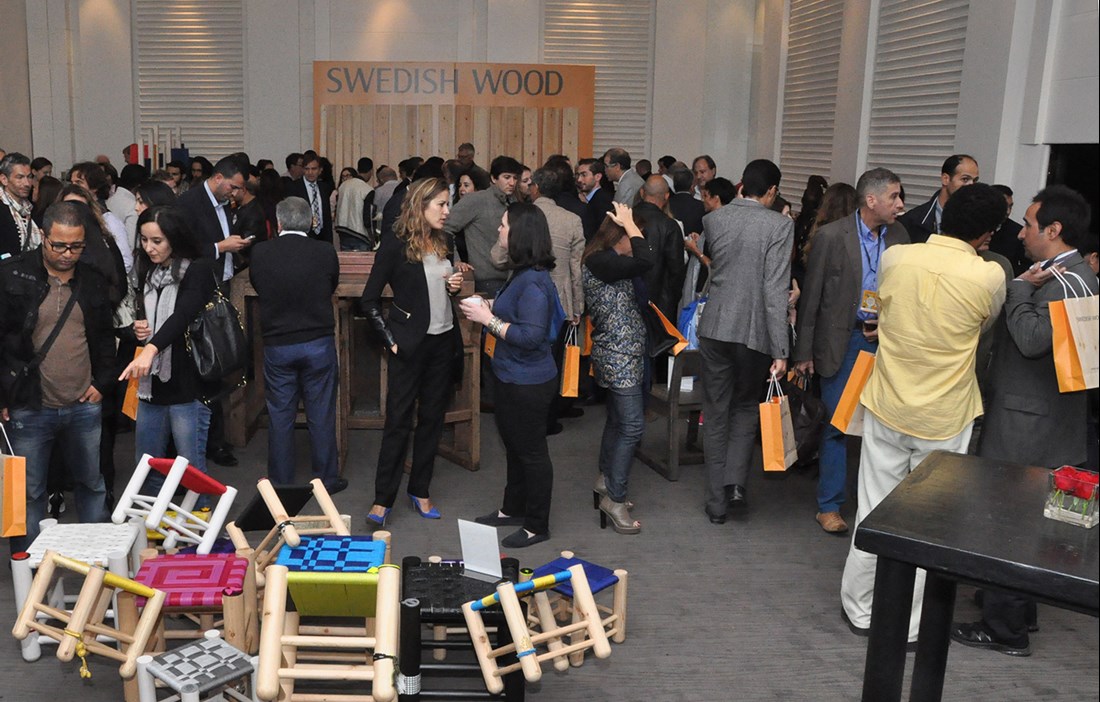During the autumn, Swedish Wood engaged ten Moroccan designers in creating furniture on the theme of ‘Swedish wood meets Moroccan creativity and woodworking tradition’. The study trip is the next step in inspiring North African designers to use Swedish wood in more ways.
“We now have a better understanding of the entire process behind the production of the material, from tree-felling to packaging the final products. Sweden has a deep woodworking tradition at the same time as Swedish design is at the forefront today, as is the technical processing of the wood”, say Kanza Ben Cherif and Said Guihia.
Out in the forest
The designers’ visit to Sweden began on Monday at Norra Timber’s head office in Umeå, followed by watching trees being felled and a visit to the sawmill in Sävar.
Their trip continued on Tuesday with a visit to Hedlunda Industri, which has international furniture giant IKEA as the main customer of its furniture factory outside Lycksele, the forestry museum in Lycksele, and a visit to wooden ski manufacturer Tegsnässkidan in Granö.
“We’ve experienced an exciting white landscape. The Swedes and Swedish Wood have given us a very warm welcome”, Kanza and Said tell us.
Stockholm Design Week
On Wednesday, the group visited the Institute of Design at Umeå University and the remainder of the week included visits to the Carl Malmsten Furniture Studies, part of Linköping University, on Lidingö, furniture companies in Småland, and Stockholm Design Week.
Extensive handicraft tradition
Morocco has an extensive handicraft tradition, which can now be developed still further thanks to the substantial imports of wood from Sweden and the bridges that the exchange is building.
“One incentive for creativity is seeing the origin of the wood. In Morocco, spruce and pine are considered to be second-class woods compared to ash or oak, but we’ve understood that here in Sweden you can also make more aesthetic and luxurious objects from pine and spruce at the same time as you are more environment-friendly”, say Kanza and Said.
“It feels very stimulating for us to inspire Moroccan designers to develop carpentry products with Swedish wood. Morocco is an exciting market with great potential for the future thanks to a long tradition of using wood and great curiosity about Swedish softwood”, says Swedish Wood’s Communications Manager Charlotte Dedye Apelgren.
Facts about Swedish exports to the Middle East and North Africa
Approximately 20% of the sawn timber products made in Sweden are exported to the Middle East and North Africa, equivalent to 3 million cubic metres of sawn timber products annually.
Swedish exports of sawn timber to Morocco amount to around 400,000 m3 annually and mainly consist of pine. This corresponds to around half of Morocco's imports of softwood, which makes Sweden a leading import country.
In Morocco, the main areas of use for Swedish pine have long been the manufacture of carpentry products like furniture, kitchen fittings, windows and doors. One example is the Moroccan sofa, a built-in piece of furniture that covers three walls and can be found in almost every home. Swedish pine is often used in the furniture’s bearing structures.



 A selection of the creations
A selection of the creations